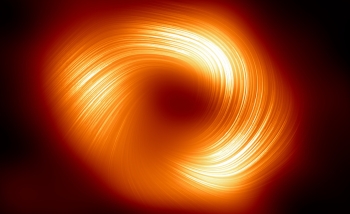Researchers suggest "mind-blowing" new approach to finding dark matter
Can we use black holes to discover new particles that might help explain dark matter? A team of researchers at Perimeter Institute think so.
“The basic idea is that we’re trying to use black holes... the densest, most compact objects in the universe, to search for new kinds of particles,” Masha Baryakhtar, postdoctoral researcher at Perimeter, told Gizmodo's Ryan Mandelbaum.
The research, originally published in Physical Review D, argues that if axions -- hypothetical particles theorized as possible components of dark matter -- are real, black holes might be the key to finding them. The process of superradiance, which supercharges the space around black holes to generate huge numbers of axions, could actually create ripples in spacetime like those detected by the Laser Interferometer Gravitational Wave Observatory (LIGO) in 2015.
At a particular frequency, we should be able to "hear a gravitational wave hum from these axions moving around," Mandelbaum writes.
Further exploration
About PI
Perimeter Institute is the world’s largest research hub devoted to theoretical physics. The independent Institute was founded in 1999 to foster breakthroughs in the fundamental understanding of our universe, from the smallest particles to the entire cosmos. Research at Perimeter is motivated by the understanding that fundamental science advances human knowledge and catalyzes innovation, and that today’s theoretical physics is tomorrow’s technology. Located in the Region of Waterloo, the not-for-profit Institute is a unique public-private endeavour, including the Governments of Ontario and Canada, that enables cutting-edge research, trains the next generation of scientific pioneers, and shares the power of physics through award-winning educational outreach and public engagement.


